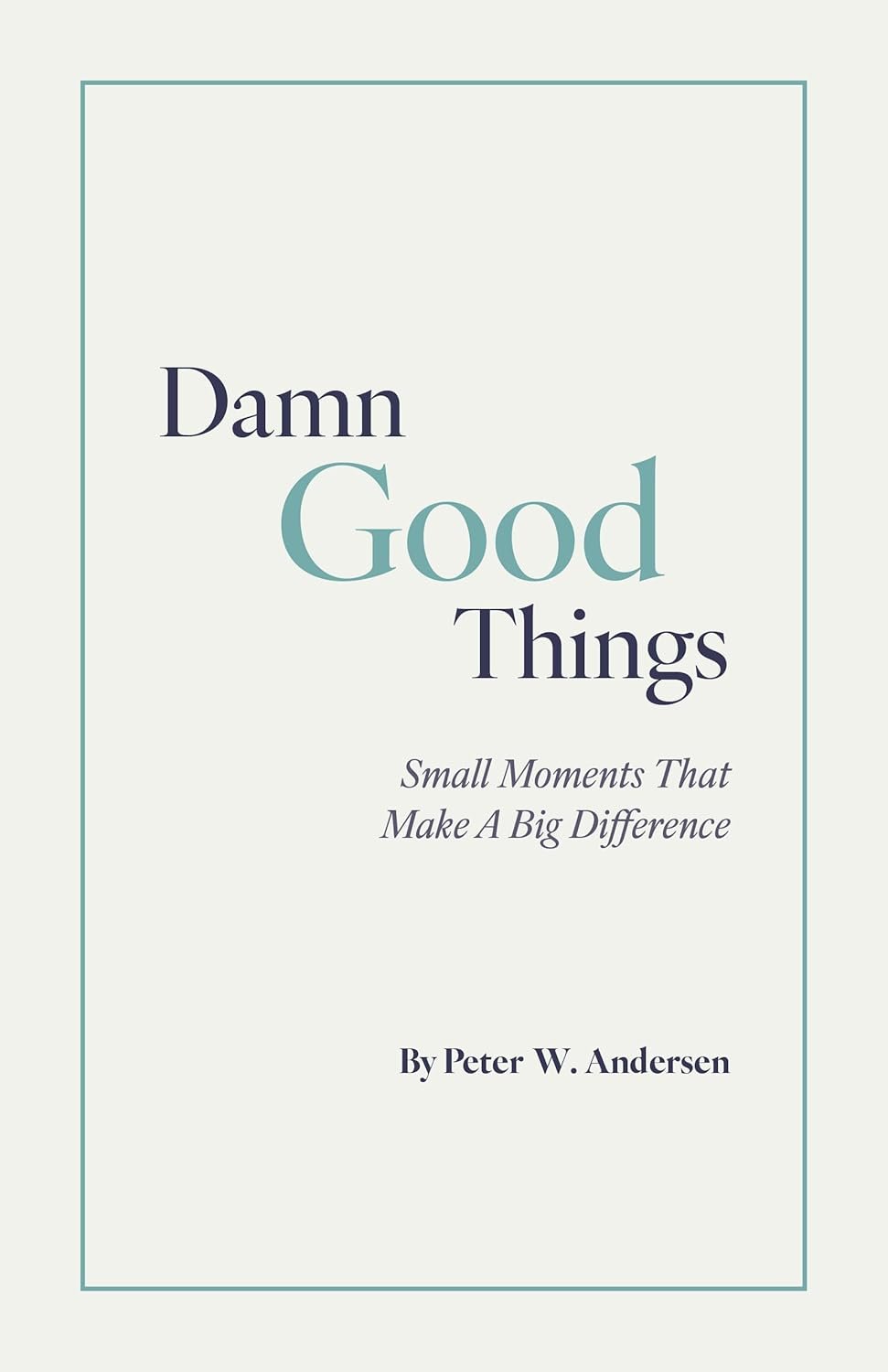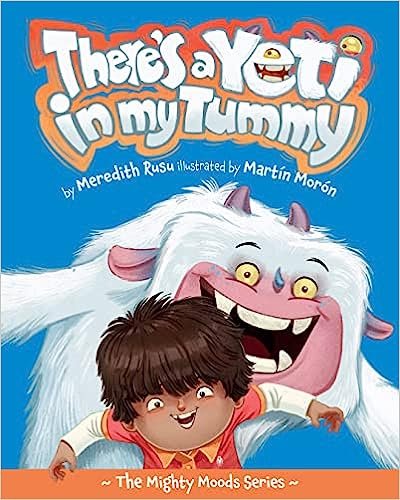Spotlight: Damn Good Things by Peter Andersen
/This is a book about being alive. The stories are real and reflect moments when we feel fully alive—but perhaps are not aware of it, unable to take time to appreciate or recognize these unexpected gifts. I call them Damn Good Things, and they’re easy to see once you know how. When you do, you might just improve your day, learn something about yourself, and even change your life.
Excerpt
Gus
My dog Stanley is a two-year-old yellow lab who has just about everything a dog needs: food, shelter, love, tasty bones and squeaky toys, several comfortable beds and best of all, his daily play at the off-leash dog park. For a half hour every day, Stanley can chase after his ball, run with other dogs, sniff the trees and swim in the lake. It’s his moment of freedom.
It was on one of these trips that Stanley and I met someone who taught us two new facts about Damn Good Things.
Fact #1: Damn Good Things can be shared. That is, you can experience a Damn Good Thing simply by watching somebody else experience one.
And Fact #2: That somebody else doesn’t have to be a person. On this particular day, it turned out to be a very lucky dog named Gus.
It was a gray December afternoon and we pulled into the parking lot a little later than usual. Stanley was barking and drooling and pacing the back seat of the car, eager to get out. As soon as we were inside the enclosure and the gate was closed, I unclipped Stanley’s leash and he took off like a rocket across the big field. I swung the Chuck-it over my head and Stanley’s favorite bright orange rubber ball went soaring ahead of him, an ecstatic flash of yellow bounding along in pursuit.
The ball bounced twice on the far side of the field before Stanley leaped up and nabbed it in mid-air. He brought it back and dropped it at my feet. We repeated this a half dozen times until Stanley’s initial Oh-My-God energy had settled into a regular happy dog energy.
Then Gus entered the picture.
The next time I threw the ball, a small brown blur streaked past me. It was another dog. He outran Stanley, snatched the ball up with hungry jaws and bolted off across the park, head high. I studied him – he was a young brindle mutt, happy to run, proud to have a ball. I looked at Stanley, who didn’t care. He’d already lost himself sniffing the butt of a nearby Newfoundland.
“I’m so sorry!” came a voice.
A middle-aged woman holding a leash walked toward me, shaking her head.
“We’ve been here an hour,” she said. “He hasn’t stopped running the whole time.”
She introduced herself as Rosie and told me her dog’s name was Gus. The look on Rosie’s face told me that he was a dog who simply couldn’t be stopped.
I introduced myself and pointed out that Stanley was perfectly happy doing what he was doing, and didn’t need his ball right now. But Gus did need the ball. He was so happy! Bounding around the park, so proud of the bright orange rubber ball. It was wonderful.
“He’s a rescue,” she explained.
“Ah, good for you,” I said.
I’ve never had the guts to adopt a rescue dog. You don’t know what you’re getting. My dog and I have a solid understanding: I’m the emotionally needy one, and you’re here to help me get through life, not the other way around. I’ve always admired people who adopt a dog who might have issues of its own. Maybe someday.
“He’s a year old,” she went on. “They told us that before we adopted him, he’d pretty much been locked in a kennel for three months.”
I stared at her.
“Three months?”
I looked for Gus, but it took a minute to find him – there, nearly at the horizon, still galloping ahead with joy.
Three months, I thought. And I had a hunch Gus was thinking it, too.
Watching him run made you smile. Watching him run after three months in a kennel – well, that took your breath away.
You see, Stanley could never understand this kind of joy, because he’d never been without it. Gus had, and now to him the world was very sweet indeed. Because while all the other dogs ran and jumped and zigged and zagged and chased and tumbled, Gus soared in an endless circle around the outer edges of the park, running as fast and as far as was physically possible. Gus had paid his dues, and the kennel was behind him. All dogs at the off-leash park enjoy their freedom, but watching this guy run – head high, soaring, tireless – you wondered whether happy little Gus wasn’t Freedom itself.
Buy on Amazon Kindle | Paperback
About the Author
Peter Andersen has been writing since he was a kid. In his professional life he’s worked as a journalist, writing teacher, newspaper editor, manager, freelancer, and technical writer. He spent 30 years producing technical documentation at Microsoft and other software companies. These days, in addition to writing about Damn Good Things, he conducts life story interviews with the residents of a local retirement community.
The idea for Damn Good Things came about when he found an old diary entry about a rollercoaster ride he once took with his father. The entry described how fully alive they both felt in that moment, and ended with the words, “What a damn good thing for me and my dad to do!”
Inspired by that diary entry, he began to research and write about the moments when we feel completely alive. He soon realized that this is what he’d been writing about his whole life. This is truly the lens through which he sees the world. Whether it’s an aging, half-blind pug tearing across a wood floor to get to her dinner, the distant whistle of an approaching train in the night, or a memory-filled relic from a childhood home – he’ll show you how all of these are Damn Good Things.
Website: https://peterandersen-author.com/
Facebook: https://www.facebook.com/profile.php?id=61568941315689
















































